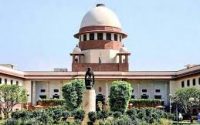$100 Website Offer
Get your personal website + domain for just $100.
Limited Time Offer!
Claim Your Website NowAyodhya: A Buddhist stakeholder in Ram Janmabhoomi in Supreme Court
Source: indiatoday.in
he Supreme Court is hearing the Ayodhya title suit on a daily basis since August 6. The court has heard Hindu side, primarily represented by the Nirmohi Akhara and deity Ram Lalla till now. It has to hear 14 petitioners. Among them is a Buddhist petitioner, Vineet Kumar Maurya, staking claim on the piece of land stuck in the Ayodhya title suit for decades.
The Buddhist angle in Ayodhya title dispute emerged in July last year, when the Supreme Court admitted an intervention petition and tagged it with 13 other appeals making Maurya, a lawyer, the 14th petitioner. The Supreme Court had dismissed other intervention petitions in the Ayodhya title suit.
The Ayodhya case reached the Supreme Court after petitioners challenged the 2010 Allahabad High Court judgment ruling for tri-partition of the 2.77 acre land among deity Ram Lalla, the Nirmohi Akhara and the Sunni Waqf Board. The judgment satisfied none of the parties.
The same Allahabad High Court judgment has become the basis for the Buddhist claim on the disputed land. The high court judgment talks about pre-Babri Masjid structures and refers to the ASI (Archaeological Survey of India) reports.
The ASI, in its report, mentions the presence of stupas and pillars at the disputed site from pre-mosque era. The ASI reports confirm the Buddhist link to Ayodhya, which is identified by many historians as ancient India’s Saket, a renowned Buddhist centre of the time.
This connection is now an argument in the writ petition that the Supreme Court admitted last year making Buddhist the third religious stakeholder in Ayodhya title suit.
This is significant in the view that a couple of petitions seeking to make Buddhists a party in the ongoing title suit had been rejected before the Babri Masjid was demolished in 1992. Their argument that the Babri Masjid was built by demolishing a Buddhist structure was not accepted by the court then.
The writ petition in the Supreme Court refers to five archaeological excavations beginning with the one under British archaeologist Alexander Cunningham, the founder of the ASI, in 1860-62. The petitioner said Cunnigham had failed to find any evidence of a Hindu temple in Ayodhya but found ruins of a Buddhist shrine.
The final excavation was conducted on the orders of the Allahabad High Court, when it was seized with the Ayodhya title suit. In its report, ASI said a massive structure standing on dozens of pillars existed at the disputed site before the construction of the Babri Masjid. All this will come to test in the Supreme Court, when it hears the Buddhist plea in the Ayodhya case.



